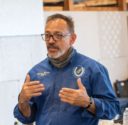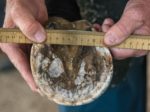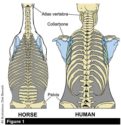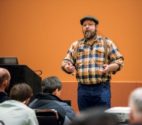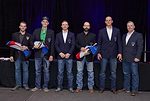Advertise Follow Us
American Farriers Journal
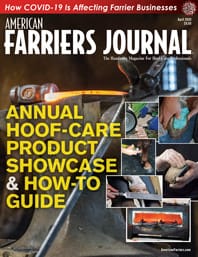
View Archived Issues
April 2020
Volume: 46
Edition: 3
American Farriers Journal is the “hands-on” magazine for professional farriers, equine veterinarians and horse care product and service buyers.
-
Table Of Contents
Table Of Contents
5 Phases for Direct Gluing Shoes
Farrier Curtis Burns delivers advice for better success with using direct glue-on shoes.Read MoreSpecial CoverageFarriers Report on COVID-19 Businesses Practices
Many United States farriers feel early impact from clients affected by the virus, but horses still require footcareRead MoreHow Nutrition Affects the Horses' Hoof
Equine feet will reflect diertary deficiencies and excesses in their outward appearanceRead More6 Steps to Cure a Microbial Infection
Treating thrush, white line and other infections require an approach that is effective without causing harm to a horse’s footRead MoreThe Benefits of Pads and Packing in the Show Horse Ring
Equine athletes compete more and at a higher level with sound choicesRead MoreHall of Fame Farrier Dave Farley Shares 12 Points of Reference to Use When Trimming
Using a multidimensional approach can increase the likelihood of achieving a balanced footRead MoreRadiograph Method Can Fall Short in Determining Sole Depth
ELPO study illustrates need for closer evaluation of hoof tissuesRead MoreEquine Reciprocating Systems: Extreme Skeletal Specializations
In this sixth installment, Dr. Deb Bennett discusses the impact of the equine joint shape on the horse’s forelimbRead MoreMichigan Farrier Shares His Tips for a Successful 45-Year Career
Reliance on the basics of farriery and sound business practices promotes favorable outcomesRead MoreHoof Moisture Content Plays a Major Role in Foot Quality
Shorter trimming intervals, moisture barriers and proper supplementation can aid farriers in regulating hoof moistureRead MoreTherapeutic Farrier Achieves Hoof-Care Goals Using Pads and Pour-ins
Products can provide frog support, cushion the sole and reduce concussionRead MoreResearch Journal: April 2020
The information, ideas and opinions expressed are those of the author and do not necessarily represent those of the United States Department of Agriculture.Read More -
Featured Articles
Featured Articles
The Benefits of Pads and Packing in the Show Horse Ring
Equine athletes compete more and at a higher level with sound choicesRead MoreEquine Reciprocating Systems: Extreme Skeletal Specializations
In this sixth installment, Dr. Deb Bennett discusses the impact of the equine joint shape on the horse’s forelimbRead MoreMichigan Farrier Shares His Tips for a Successful 45-Year Career
Reliance on the basics of farriery and sound business practices promotes favorable outcomesRead More - Digital Edition
-
Online Extras
Online Extras

